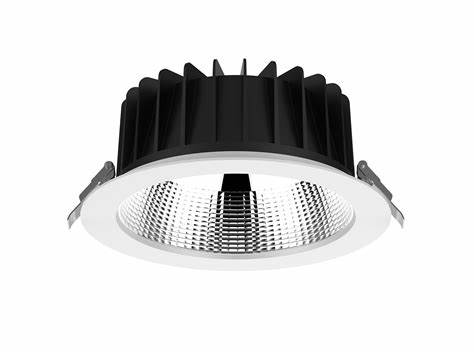When it comes to modern lighting solutions, recessed downlights have become a popular choice for homeowners and designers alike. Among the various types of recessed lighting, trimless and trimmed downlights stand out for their unique aesthetics and functional benefits. In this ultimate guide, we’ll delve into the differences between trimless and trimmed recessed downlights, examining their pros and cons to help you make an informed decision for your lighting needs in 2024.
What are Trimless Recessed Downlights?
Trimless recessed downlights are designed to blend seamlessly with the ceiling, creating a minimalist and modern look. These lights are installed in such a way that the trim is not visible, resulting in a clean and unobtrusive appearance.

Pros of Trimless Recessed Downlights
- Sleek Aesthetics: The primary advantage of trimless downlights is their sleek and contemporary appearance. They offer a seamless integration with the ceiling, making them ideal for modern interiors.
- Versatility: Trimless downlights can be used in various settings, from residential to commercial spaces, due to their unobtrusive design.
- Enhanced Focus: Without the distraction of visible trims, these lights can better highlight architectural features and artworks.
Cons of Trimless Recessed Downlights
- Complex Installation: Installing trimless downlights requires precision and expertise, often necessitating professional installation.
- Higher Cost: The materials and labor involved in installing trimless downlights can be more expensive compared to trimmed options.
- Maintenance Challenges: Accessing the light components for maintenance or replacement can be more challenging due to the concealed design.
What are Trimmed Recessed Downlights?
Trimmed recessed downlights feature a visible trim that surrounds the light fixture, providing a defined border between the light and the ceiling. These trims come in various styles and finishes, allowing for customization to match the décor.

Pros of Trimmed Recessed Downlights
- Ease of Installation: Trimmed downlights are generally easier to install, making them a popular choice for DIY enthusiasts.
- Cost-Effective: These lights are often more affordable in terms of both materials and installation costs.
- Variety of Styles: The availability of different trim styles and finishes allows for greater customization to suit various interior designs.
Cons of Trimmed Recessed Downlights
- Visible Trim: The most significant drawback is the visible trim, which can interrupt the ceiling’s smooth appearance.
- Potential for Dust Accumulation: The trim can collect dust and require regular cleaning to maintain its appearance.
- Less Modern Look: While versatile, trimmed downlights may not offer the same modern and minimalist aesthetic as their trimless counterparts.
Choosing the Right Downlight for Your Space
When deciding between trimless and trimmed recessed downlights, several factors should be considered to ensure you select the best option for your needs. These factors include design preference, budget, installation complexity, and maintenance requirements. By carefully evaluating each of these elements, you can make an informed decision that aligns with your aesthetic goals and practical considerations.
Design Preference
Design Preference: The first factor to consider is your design preference. Trimless downlights offer a minimalist and seamless look, making them ideal for modern and contemporary interiors. Their design allows them to blend seamlessly with the ceiling, creating a clean and unobtrusive appearance. This makes trimless downlights a popular choice for spaces where a sleek, modern aesthetic is desired.
On the other hand, trimmed downlights feature a visible trim that surrounds the light fixture, providing a defined border between the light and the ceiling. These trims come in various styles and finishes, allowing for greater customization to match the décor of your space. If you prefer a more traditional or decorative look, trimmed downlights may be the better option.
Budget
Budget: Another important consideration is your budget. Trimmed downlights are generally more budget-friendly, both in terms of materials and installation costs. They are often easier to install, which can reduce labor costs if you are hiring a professional.
In contrast, trimless downlights may require a higher investment due to the complexity of their installation and the materials used. However, the sleek and modern look they provide can add significant value to your space, making them a worthwhile investment for those with a larger budget.
Installation
Installation: The complexity of installation is another key factor to consider. Trimmed downlights are typically easier to install, making them a popular choice for DIY enthusiasts. They usually come with a straightforward installation process that does not require specialized tools or skills. Trimless downlights, however, often require precision and expertise for proper installation.
This can involve more complex techniques and may necessitate hiring a professional to ensure the lights are installed correctly. If you are comfortable with DIY projects, trimmed downlights may be the more practical choice. If you prefer to hire professionals or are looking for a more seamless and integrated look, trimless downlights may be worth the additional effort and cost.
Maintenance
Maintenance: Maintenance is another important consideration when choosing between trimless and trimmed downlights. Trimmed downlights are generally easier to maintain, as the visible trim allows for easy access to the light components for cleaning or replacement. The trim can be easily removed and reattached, making maintenance tasks straightforward.
Trimless downlights, on the other hand, can pose more challenges when it comes to maintenance. The concealed design can make it more difficult to access the light components, requiring more effort and potentially professional assistance for maintenance tasks. Consider how often you may need to perform maintenance and whether the ease of access provided by trimmed downlights is a priority for you.
Conclusion
Both trimless and trimmed recessed downlights offer unique benefits and can enhance the aesthetics of any space. By understanding the pros and cons of each type, you can make an informed decision that aligns with your design preferences, budget, and installation capabilities. Whether you opt for the sleek, modern look of trimless downlights or the customizable and cost-effective trimmed downlights, you’ll be investing in a lighting solution that adds value and style to your home or business in 2024.
